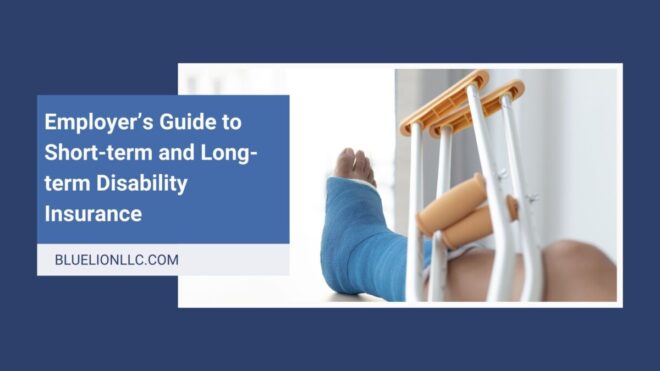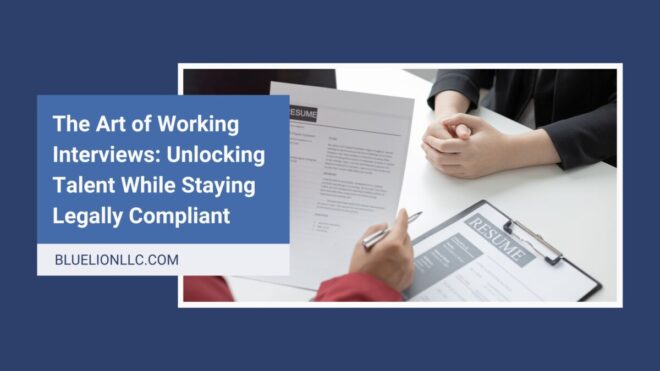
As an employer, you may have a general understanding of short-term and long-term disability insurance. But do you clearly understand these benefits and the difference between each? Disabilities can impact anyone, and having the right policies ensures your team members can receive the necessary assistance without unnecessary stress.
Everyone should have some type of disability insurance to protect their income if they cannot work due to an illness or injury. Many employers provide short-term disability, with a few states requiring it. And while long-term disability coverage is not mandatory, about half of large and mid-sized employers include it in their benefits.
Below, we share a simple breakdown of short-term and long-term disability to help you navigate this aspect of employee benefits.
Short-Term Disability
Short-term disability (STD) provides partial wage replacement for employees who are temporarily unable to work due to a non-work-related illness or injury. The disability can last for a few weeks to a whole year.
How can employees receive coverage?
An employee seeking short-term disability coverage typically needs to provide medical documentation from a healthcare professional stating the nature of their condition and expected recovery time. The most common reasons include surgery or illness recovery, an accident injury, or pregnancy/maternity leave.
Note that if the employee is injured on the job, their leave would be covered under your workers’ compensation insurance rather than your short-term disability policy.
How much coverage does short-term disability provide?
Short-term disability benefits usually cover a percentage of the employee’s base pay, typically around 60-80%. However, this can vary based on your plan. Employees receive weekly benefit payments.
Is there a waiting period?
There’s often a waiting period from when the employee becomes disabled to when benefits start to prevent abuse of disability benefits. This can range but is usually 14 days or fewer. Benefits typically begin on the eighth day after a claim is filed.
Because of the brief elimination period, short-term disability can ease financial stress as an employee waits for their long-term insurance to begin, which has a longer waiting period. Many choose to use both to supplement their income and lower costs.
How long does the benefit period last?
Standard short-term disability benefit periods are 13, 26, or 52 weeks. The U.S. Bureau of Labor Statistics (BLS) reports that the median coverage length is 26 weeks.
Are employers required to provide short-term disability?
No federal law mandates employers to provide short-term disability insurance, and most states have kept this optional. However, six jurisdictions require disability insurance, including:
- California
- Hawaii
- New Jersey
- New York
- Rhode Island
- Puerto Rico
Long-Term Disability
Long-term disability (LTD) insurance provides wage replacement for employees who are unable to work any job due to a serious, prolonged illness or injury. Cancer, mental illness, arthritis, chronic pain, heart disease, and other conditions that prevent employees from performing everyday tasks are common qualifying reasons.
How can employees receive coverage?
Employees must provide medical documentation from a healthcare provider stating that their condition prevents them from performing their job for an extended period.
How much coverage does long-term disability provide?
The coverage percentage for long-term disability benefits is usually less than short-term disability, covering around 40-70% of the employee’s income. LTD benefits are paid monthly.
Is there a waiting period?
Long-term disability elimination periods can run between 30 days and two years, though most take 90 days to begin receiving benefits.
How long does the benefit period last?
Long-term disability insurance can extend for months to years. Sometimes, LTD even lasts until retirement or until the individual is eligible for Social Security payments (age 65) for those who are permanently disabled.
Are employers required to provide long-term disability?
No, there are no laws requiring employers to offer long-term disability insurance. But that doesn’t mean you shouldn’t! Many employers include some kind of long-term disability in conjunction with their short-term disability group plan. This can enhance your employee benefits package and attract new talent while relieving your team during difficult situations.
What about employer contributions and costs?
While your provider and state may have specific requirements regarding short-term disability, employers can choose what type of plan they offer:
- Traditional: Employer pays the total amount
- Contributory: Employer and employees both contribute to the premium
- Core buy-up: Employees can choose to buy more coverage
- Voluntary: Employees alone cover the disability insurance
Note that short-term disability benefits are taxable if the employer pays for all or a portion of the insurance OR if the employee pays with pre-tax dollars (usually from their paycheck).
The BLS reports it costs employers approximately 1% of the total compensation cost, or $624 per full-time employee annually.
Final Thoughts on Disability Insurance
Considering the cost of disability insurance, this benefit is well worth it! You’ll show employees that you value their well-being, which will only pay off in the long run. When your team members know they have this additional safety net to fall back on, workplace morale will improve—and we know that higher morale equals higher retention and productivity.
Specific policies and regulations may vary based on location and industry. Consulting with an HR professional can help you tailor your disability policies to your company and employees while adhering to relevant laws. Contact BlueLion today at 603-818-4131 or info@bluelionllc.com to ensure your benefits are where they should be and your team is supported!
The information on this website, including its newsletters, is not, nor is it intended to be legal advice. You should contact an attorney or HR specialist for advice on your individual situation.












